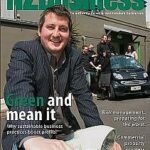Breaking down creativity barriers
How to promote No.8 wire thinking in the workplace and turn your employees into happy, productive and motivated teams.
With the famous New Zealand No.8 wire thinking now more likely to be found in museums and on movie sets, its no wonder that SME owners are bemoaning the lack of workplace productivity and their inability to find the right people.
Founder and director of Creativity Works, Claire Wadey, contends that the real problem is the decline of the once valued creative thinking culture which characterised the Kiwi farm and workplace.
Its not a case of being unable to find the right people, but failure by many SMEs to make proper use of existing staff.
Creativity Works endeavours to develop a creative culture in the average workplace for better training results and productivity and to facilitate restructuring or change. Wadey believes that this countrys future competitive edge depends on the No.8 wire thinking that built it in the first place.
Creativity is about being different, thinking laterally and making new connections. It can be applied to improve almost any outcome from developing an innovative new product to devising sales strategies or improving workplace safety training, provided the barriers to creativity are removed.
Wadey says the emphasis in the modern workplace environment has instead shifted to keeping costs down, restrictive systems and processes and limiting job descriptions.
Its like weve adopted the values of the industrial age and merely renamed it systemising the business but that leaves people bored, unproductive and frustrated.
She says that to develop an environment of creative thinking teams, individual creativity must be fostered.
An individuals creativity comprises three components individual expertise (technical, intellectual and procedural knowledge), levels of motivation and the ability and use of skills to think creatively. It is important that the barriers to workplace creativity be removed first, including:
Lack of challenge. Its better to match the right people to the right roles.
Lack of freedom. Instead, allow employees the autonomy to complete tasks in their own style, so long as they are clear about the final destination.
Lack of resources. A better course of action is to ensure employees have adequate time and money to complete their task instead of watching the budget.
Poorly matched teams. Each individual should bring different skills, temperament and attitudes to the team.
Lack of motivation money is not the big motivator many think it is. It is important for management to offer acknowledgement of achievements, open mindedness to creative endeavours and timely feedback and praise over a sustained period.
Building a strong, creative thinking team is the real challenge. But this can be facilitated with various exercises.
Wadey says it is important that the normal approach to getting teams to think creatively is to start slowly with a non-work focussed activity, because it lowers defences and eliminates the risk of office politics and territorial disputes, while increasing trust as people get to know each other on a more personal level.
One of the activities I will do is to place a collection of random objects in the middle of the table. Each person, individually or in pairs, will find that one of the items triggers something that relates to their life whether its a childhood memory or their current sporting interests.
They are then asked to tell a story about themselves, using the random object.
Another activity is to get team members to use their non-dominant hand to draw pictures describing their social, personal and working lives.
We use the non-dominant hand because then team members focus more on the story and less on the quality of their drawings. This builds trust and understanding, an important foundation to moving ahead.
There are loads of things you can do to develop creative thinking teams, but the main thing is remove the workplace barriers to creativity and start promoting a culture of No.8 wire thinking thereby turning employees into happy, productive and motivated teams. NZB
Claire Wadey is director of
Creativity Works
email [email protected] or visit www.creativityworks.co.nz



